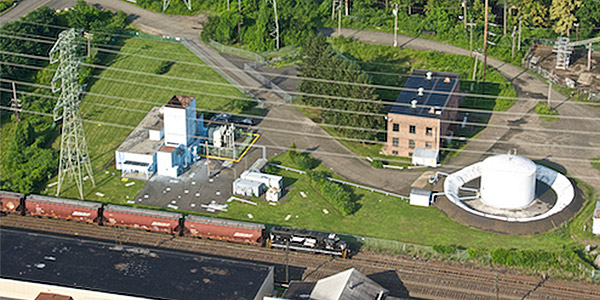By Rich Heidorn Jr.
NYISO’s Business Issues Committee on Tuesday endorsed the ISO’s plan to replace its ad hoc generator retirement studies with quarterly “short-term” analyses.
The new Short-Term Reliability Process (STRP) would address generator deactivations and other reliability needs, beginning with quarterly Short-Term Assessment of Reliability (STAR) studies, explained Keith Burrell, NYISO’s manager of transmission studies. Burrell said the change would ease the workload for ISO staff and transmission owners.
“We are about to start our 11th generator deactivation assessment this year,” he said. “Certainly, from a workload perspective, doing four instead of 11 looks awfully nice.”
The Tariff changes, which the ISO plans to file with FERC in February, also would expand the generator deactivation rules to non-market participants that have the “ultimate authority” over deactivations. Generators with a nameplate rating of 1 MW or less would be exempt.
Zach Smith, vice president of system and resource planning, said “a core change” is that the biennial Reliability Needs Assessment (RNA), which has covered Years 1 through 10, will be narrowed to Years 4 through 10. The RNA, which evaluates resource and transmission adequacy and transmission system security, is the first of two studies done in the Reliability Planning Process (RPP). The RPP also includes the Comprehensive Reliability Plan, which evaluates market‐based solutions to the needs identified in the RNA.
The STRP and the RNA will include an overlap in assessing Years 4 and 5.
“You will have a short-term reliability process to address issues identified in the short term, and you will have the RNA, which is now essentially a long-term planning process,” Smith added. “My expectation is that within the RNA … that we document what the recent findings have been from the short-term reliability process.”
The STRP will conclude if the STAR does not identify a short-term need or finds that such needs will be addressed in the RPP. If the STRP does identify short-term needs, NYISO will issue a solicitation seeking solutions.
The ISO is proposing to pay costs in excess of $100,000 that a generator in an ICAP-ineligible forced outage (IIFO) incurs to repair or replace a damaged step-up transformer or other system protection equipment if the equipment is needed to address an immediate STRP need. Such generators would not be reimbursed for repairs of less than $100,000.
One other change: “Today, when a generator completes its notice to deactivate, a study period is 365 [days] plus five [years],” Burrell said. Under the new rules, “it’s 365 [days] plus four [years], so it’s a five-year study … instead of a six-year study.”
The units, many of which are counted on to maintain transmission security in load pockets, typically run on hot summer days when ozone readings are high. Many of the units are inefficient and nearing 50 years of age, making them poor candidates for the installation of after-market controls. The second phase of the ISO’s 2018/19 RPP is evaluating the reliability impacts of the retirements of all 3,300 MW.
The proposed DEC rule, which it expects to finalize within several weeks, would phase in compliance obligations between 2023 and 2025.
Smith said the peaker rule was part of the motivation for the proposed changes. “I’m nervous that our current process wouldn’t be able to handle the change fast enough,” he said.
The BIC unanimously recommended Management Committee and Board of Directors approval of the STRP. The ISO will seek a May 1, 2020, effective date, with the first STAR beginning July 15 and results expected by October.
Relocating the IESO Proxy Bus
Rana Mukerji, senior vice president for market structures, also briefed the BIC on plans to relocate the proxy bus used for scheduling transactions with Ontario’s Independent Electricity System Operator (IESO).
NYISO’s market software currently uses the Bruce 500-kV bus, but an analysis of the transactions between IESO and NYISO indicates that moving the bus “may better align the power flow results with real-time operations,” Mukerji said.
He said NYISO will pursue a move to the Beck 220-kV bus next year.





